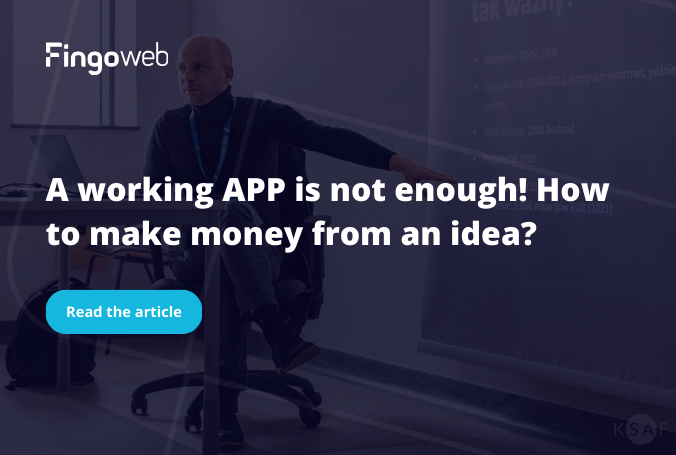Choosing the right software for TVs, kiosks, or digital signage players is not easy. There is a vast world of solutions available, from cloud-based SaaS companies offering subscription based solutions to custom-made software. How can one decide the best option?
In this (huge!) review, you will find:
- TV, Smart TV, Digital Signage and Kiosk. What’s the difference?
- Most important part: the software
- Different Types of TV Applications
- Smart TV App Development
- #1 User Interface and User Experience (UI/UX) Design
- #2 Performance Optimization
- #3 Platform-Specific Guidelines and Best Practices
- The Best Digital Signage Software of 2024
- BrightSign
- Xibo
- TelemetryTV
- NoviSign
- Yodeck
- viewneo
- Custom Digital Signage Solution
- Great example: IMS
- The Best Kiosk Software
- KioWare
- Scalefusion
- Hexnode
- Turn Any Device into a Digital Kiosk
- Great example: Wayfinder
- Custom-made Software. Why do you need one?
- It’s starts with a business goal
Screens and technology is everywhere in our lives, both at home and at work. We constantly use them – from procrastinating on our smartphones, working from home on computers, or showing sales results on the board meetings on TVs and projectors.
But that’s not all – you see screens at bus stops, inside restaurants, retail stores, doctor’s offices, and even at gas stations. Take gas stations as an example:
- they use kiosks, where you can pay for your gas by yourself,
- interactive screens with games for kids to play,
- …. and digital signage TV software that shows what food you can buy.
Smart TVs are slightly different. As you can download apps from places like Android TV or the LG TV store, there is a chance that your business wants to create tv applications of their own.
If you run an organization and need to use any of these kinds of screens, it might be tough to figure out which one is the best choice for you.
From now on, in the latter part of this guide, we are going to use the word “screens” as a shortcut to name all the devices you can use in business applications, apart from computers and smartphones.
Pssstt…. if you are interested only in one of three topics we cover, you can skip here:
- Different Types of TV Applications
- The Best Digital Signage Software of 2024
- The Best Kiosk Software
TV, Smart TV, Digital Signage and Kiosk. What’s the difference?
There are different ways to reach customers (or business goals!) when working with various screens. Imagine for a minute that you have a 42-inch LG TV. You can use it for so many ways:
- The TV is hanging in the conference room of a manufacturing company, where it is used to present data using dedicated software.
- The TV is used in a digital signage campaign in a clothing store, displaying current discounts.
- An organization creates a custom Smart TV application for their company, which is available in the on TVs app store.
Just one simple screen, but three entirely different uses. Additionally, there are kiosk displays, which usually operate on interactive kiosk software that allow for specific actions (such as finding a route on a map or making a doctor’s appointment).
The way you use the screen is directly related to the business goals you want to achieve.
Most important part: the software
Choosing different hardware is one thing, but what is even more important is picking up the right software. Depending on your approach while deciding the software, it can be a great limitation or a blessing from the heavens.
There are various solutions on the market, from software offered by the manufacturer of the devices to custom solutions.
Different Types of TV Applications
We will start with the broadest topic, which is applications for TVs. Here it’s easily to distinguish two alternatives:
- Business applications that are not publicly available. For example, an application displaying the progress of work in a manufacturing company on a TV screen.
- Applications for smart TVs, publicly available. The leader in smart TVs is Samsung, with Tizen OS and its store. To give you an example; a startup specializing in streaming sports events will want to build a smart TV application available on Tizen OS.
In both cases, you will find ready-made solutions, complete systems, cloud software, and dedicated TV applications built from scratch. The choice, as always, depends on the needs of your organization.
If you require a dedicated, custom-made TV application. You are welcome to reach our team of exports:
Smart TV App Development
The thing to know is that, depending on who you ask, more than a half of the smart TV market is dominated by Samsung’s Tizen OS, which is significant when making an informed decision on picking the right system to showcase your smart TV app.

Things you should consider before developing smart TV apps:
#1 User Interface and User Experience (UI/UX) Design
Smart TVs are controlled primarily through remote controls, and the viewing distance is usually several feet away. Therefore, the UI/UX design should be intuitive, easy to navigate, and optimized for the TV screen. You should also remember that there are limitations: transparency is not always a good idea, as there is limited operating system support for this (and other) effects.
#2 Performance Optimization
Smart TVs often have less powerful hardware compared to other devices like smartphones or computers. Ensuring smooth performance is critical for a good user experience.
#3 Platform-Specific Guidelines and Best Practices
Each smart TV platform (e.g., Android TV, Apple TV, Roku, Samsung Tizen, LG webOS) has its set of guidelines, SDKs, and best practices. Different versions of the same operating system add another layer of challenges. Adhering to best practices and developer team know-how ensures compatibility and a better user experience.
READ MORE ABOUT THIS TOPIC:
How Companies Create Software? Software Development Models
Smart TV: Tizen OS vs. web OS vs. Android TV
Tizen TV apps are the most popular smart TV apps you can imagine, mostly because of the popularity of Samsung TV’s. Samsung’s support for the platform and vast documentation favors Tizen OS app development.
Custom app development for Tizen OS
- Languages: JavaScript, HTML, CSS
- IDE: Tizen Studio
- SDK: Tizen SDK
Biggest advantage of creating custom apps for Tizen OS:
- Wide Reach: Tizen OS is used in various Samsung devices, which means apps can reach a large audience. (Additional note: Tizen is an open-source project of Linux Foundation, which makes it easier for developers to build dedicated solutions not connected to Samsung).
- Integration Opportunities: Apps can easily integrate with other Samsung services and devices for a seamless user experience.
- Developer Support: Samsung offers resources and tools to help developers create and test their apps on Tizen OS.
Custom app development for Android TV
- Languages: Java, Kotlin, Flutter, other
- IDE: Android Studio
- SDK: Android TV SDK
Biggest advantage of creating custom apps for Android TV:
- Google Play Store Access: Apps can be easily distributed and updated through the Google Play Store.
- Familiar Development Tools: If you already know how to create Android apps for phones, you’ll find it similar to developing for Android OS smart TVs.
- Integration with Google Services: Apps can integrate with Google services like Google Assistant for voice control and search functionalities.
- Support for Various Input Methods: Apps can be designed to work with remote controls, game controllers, and even voice commands.
Custom app development for webOS
- Languages: JavaScript, HTML, CSS, other
- IDE: variuous
- SDK: webOS TV SDK
Biggest advantage of creating custom apps for webOS:
- Rich Media Support: webOS supports various media formats, which is great for streaming and multimedia apps. Remember: media support is closely connected to the webOS version.
- Access to Device Features: Apps can use features like notifications, storage, and playback controls.
- Growing Market: The smart TV market is expanding, offering more opportunities for app developers.
The Best Digital Signage Software of 2024
Ufff… we covered the topic of TV apps, but it’s just the tip of the iceberg, isn’t it? Below you will find a list of the most popular cloud digital signage software on the market. The order is random, and for each of the presented brands, we have added information on the biggest advantage of the company.
BrightSign
- Good for: user-friendly UI
BrightSign specializes in digital signage solutions. Their products are designed to make it easy for businesses to display dynamic content like videos, images, and live feeds on screens in various locations. One of the main advantages of using BrightSign is its reliability – their devices are known for running smoothly 24/7 without crashing or needing frequent reboots. BrightSign offers a user-friendly platform that doesn’t require advanced technical skills to manage.
Xibo
- Good for: all-in-one open-source platform
Xibo‘s is a cost-effective, and one of very few, open-source platforms. It can help save money on licensing fees. Xibo provides robust scheduling options, allowing users to plan and automate their content display according to specific times and dates. With its user-friendly interface, setting up and managing your digital signs is straightforward, making it accessible even for those with limited technical skills. Overall, Xibo Signage is a powerful tool for enhancing communication and engagement through dynamic digital displays.
TelemetryTV
- Good for: companies looking for cloud digital signage
TelemetryTV is a popular cloud digital signage platform that’s straightforward to use. It lets you create and manage screens for showing content like videos, slideshows, or social media feeds from afar. Schools and businesses use TelemetryTV. You can update your displays right away because it’s cloud-based. Customers appreciate the clear pricing per device.
NoviSign
- Good for: companies seeking a SaaS solution.
NoviSign is an Israeli digital signage software company offering SaaS solutions for schools, restaurants, and malls. It’s user-friendly; you can drag and drop to design your screen. Plus, you can change the digital signage content from anywhere at any time over the internet. This means if there’s a surprise sale or a school event update, you can quickly make the change, and everyone will see the new info.
Yodeck
- Good for: large companies with many screens.
Yodeck started as a small company, but now has thousands of employees and clients like McDonald’s. Known for being versatile, Yodeck offers an easy drag-and-drop interface to create and manage digital signage players. It also allows screen zoning, so you can show different content on one screen at the same time. Security is key, with encrypted connections to protect data. Yodeck provides offline playback, keeping screens on even without the internet, and multi-user accounts help teams work together while controlling who can edit content.
viewneo
- Good for: AI in digital signage.
Viewneo is a cloud-based digital signage software solution that lets you manage content from anywhere in real-time. It has a friendly interface for making playlists, scheduling displays, and splitting screens to show various things at once. Viewneo supports many file types for flexible content display. You can boost your signage with products like the viewneo camera system with AI, RFID Reader, sensory coat hooks, or viewneo Butler. Tools for data analysis are also available to measure and improve performance.
BE SURE TO CHECK:
What lies in the future of digital signage?
Custom Digital Signage Solution
When standard applications and systems offered by large corporations fail to meet all the unique needs and requirements of users or businesses, you should consider the option of using custom signs software.
Opting for tailor-made software can be key to gaining a competitive edge in the market by creating tools that perfectly support the distinctiveness of your company, its mission, and strategic goals.
Great example: IMS Sensory Media
IMS uses custom-made digital signage software and is one of the biggest providers of digital signage solutions in Eastern Europe – it serves shopping malls, hardware stores, and gas stations throughout Poland. They offer services such as Audiomarketing, Videomarketing, Aromamarketing, In-store-media marketing, and Digital Signage. To give you an example of what can be achieved with custom-made software, just see the features lists.
System Features:
- Manage all media in CMS
- Create structures to manage organization and media players
- Import and store different types of content
- Create advertising campaigns
- Access to a vast music library
- Schedule audio and video on selected players
- Generate reports
- Monitor technical status of the devices
- Log system events
Additional Players Application:
- Runs on different platforms
- Connects to a system, downloads files and playback schedule, starts campaign playback independently
- Self-governing app, preloads media schedules allowing offline player operation for a set time
- Supports audio and video formats
- Campaign start accuracy within 80ms, achieved by device communication
Audio Material Features:
- Adjust volume levels
- Fade in/out function for smooth transitions between tracks
- Volume scheduling
- Overlapping schedules with different priorities
- Advertising campaigns
Video Material Features:
- Combine video formats with images
- Loop media
- Sync audio-video and video-video
- Remote configuration of LG and Toshiba devices
- Provide weather and calendar informations
- Use YouTube and static www pages
The Best Kiosk Software
We had smart TV’s, TV applications and digital signage software. The last piece of the puzzle is choosing the right kiosk software that will elevate your user experience and streamline device management. Here are our top three picks:
KioWare
- Good for: ease of use.
KioWare kiosk software transforms computers and tablets into secure self-service kiosks by locking down the browser and operating system, ensuring only approved websites and applications are accessible. Highly customizable for tailored branding and design, it enhances the customer experience. Features like session management protect user privacy, while remote monitoring allows efficient management of multiple kiosks.
Scalefusion
- Good for: companies looking for MDM (Mobile Device Management).
Similar to KioWare, Scalefusion kiosk software helps businesses manage their devices by turning them into kiosks. This restricts devices to specific apps and websites, ideal for public use or employee devices. Its user-friendly setup supports various devices like phones, tablets, and computers. Scalefusion ensures device security and appropriate usage, enhancing productivity and safety.
Hexnode
- Good for: enterprises.
Hexnode UEM is a top-tier Unified Endpoint Management solution, renowned for its extensive multi-platform support and robust security features. It excels in simplifying device management with zero-touch deployment and unified policy management across iOS, Android, Windows, macOS, and Fire OS. Users appreciate its intuitive interface and comprehensive app management capabilities, which streamline operations and reduce IT workload. Security is a standout feature, ensuring compliance with standards like GDPR and HIPAA.
Turn Any Device into a Digital Kiosk
It may turn out that you need a wholly different solution. Just like in the case of digital signage, a dedicated solution will solve your problems exactly. It can allow you to create a kiosk for non-standard devices, while maintaining a very precise specification.
Wayfinder is an example of an interactive kiosk used in shopping malls, which combines modern UI/UX design, integration with the client’s CMS, and the ability to display promotions.
Great example: Wayfinder
Wayfinder was a challenging project in which we had to present an interactive map of the facility in an attractive visual manner. Wayfinder is integrated with the client’s CMS and also allows for the presentation of current promotions in the shopping mall’s stores.
- Interactive shopping center map with information on promotions and stores.
- Mall news updates, local public transport schedules, and daily cinema listings.
- Intuitive navigation thanks to graphic design improvements.
- Integration with CMS and website for consistent information.
- Image synchronization across the mobile app and website.
- Ability to rotate the map with touch gestures.
- Change the displayed floor of the building.
- Route finding to selected points, such as shops or restrooms.
- Displaying promotion information in stores.
- Checking local public transport schedules.
- Reviewing the cinema listings.
- Access to the mall’s newsletter.
- Information on time until the mall closes.
- Natural screensaver used for advertising purposes.
- Use of SVG for enhanced map presentation.
- Easy customization of animations and map elements.
- Application styling in line with Fluent Font Design.
- Information displayed on 4K touch monitors.
- Search engine with a phrase suggestion system that activates after typing 2 characters.
- Application available in three languages: Polish, English, German.
Custom-made Software. Why do you need one?
In most cases, custom made applications are THE solution. Using one-fit-all software for TV’s, digital signage or kiosk is and always will be a trade-off – in functionality or compatibility. The biggest advantages of custom-made software:
- Tailored to your needs. Custom-made software is designed specifically for your business or personal requirements. This means it works exactly how you require it to, unlike off-the-shelf software that might not fit all your needs.
- Integration with other systems. Custom software can be made to integrate seamlessly with your existing tools and systems. This helps to streamline your processes and improve efficiency because everything works together easily.
- Competitive Advantage. Having software that’s unique to your business can give you an edge over competitors. It can offer features and capabilities that others don’t have, setting you apart in the marketplace.
- Long-Term Cost Savings. While custom software may require a larger upfront investment, it can save you money eventually. You won’t have to pay for unnecessary features, ongoing licensing fees, or upgrades that aren’t relevant to you. Plus, it can reduce the need for additional software or manual workarounds.
It Starts With A Business Goal
It all starts with the goal you want to achieve. Utilizing various platforms and screen formats, whether in the form of building applications for smart TVs, digital signage campaigns, or interactive kiosks, should be guided primarily by the need.
The most important information to remember: on the market, you will find many ready-made solutions, including SaaS options, that can meet the needs of your organization. However, if you want to perfectly achieve your business goals, it is worth considering dedicated software.
If you want to learn more about building custom software, be sure to contact us!
FAQ
How do I develop custom apps for TV or screens?
Developing custom apps for TV or screens involves using software development kits (SDKs) provided by the platform, such as Android TV or Samsung Smart TV. You will need to understand the specific guidelines and requirements for each platform. Additionally, testing your app on the target device is crucial to ensure compatibility and functionality
What software is used for digital signage?
Digital signage software varies, some popular choices are listed above. These platforms help create, manage, and display content on digital signs, like menus or ads. Features often include scheduling, interactive elements, and analytics to track viewer engagement. If you need more flexibility, try custom-made digital signage software.
Is developing kiosk software expensive?
Developing kiosk software can vary in cost. It depends on features, design complexity, and hardware. Custom solutions are usually more expensive than off-the-shelf software. Maintenance and updates also add to the cost over time.








